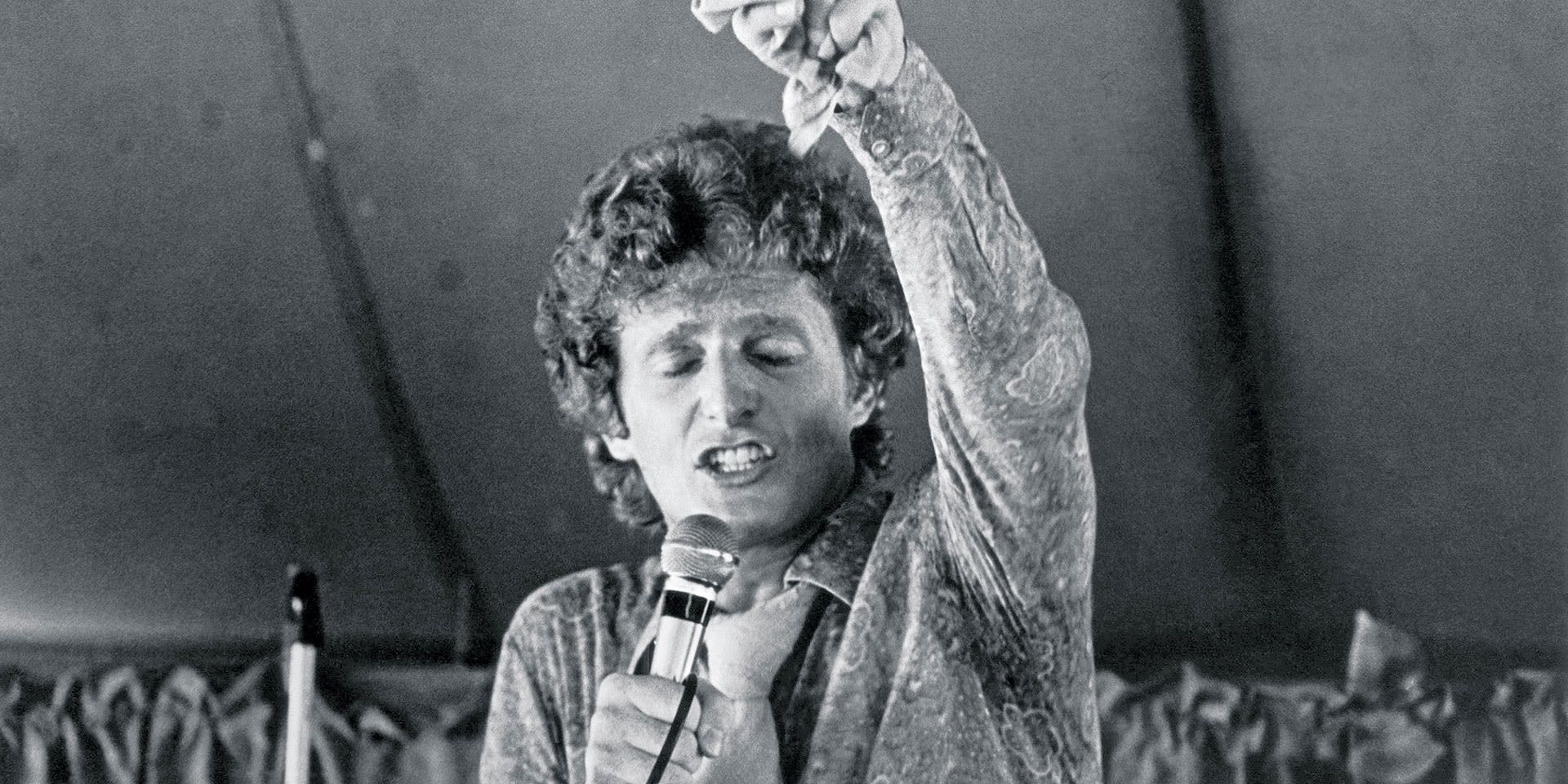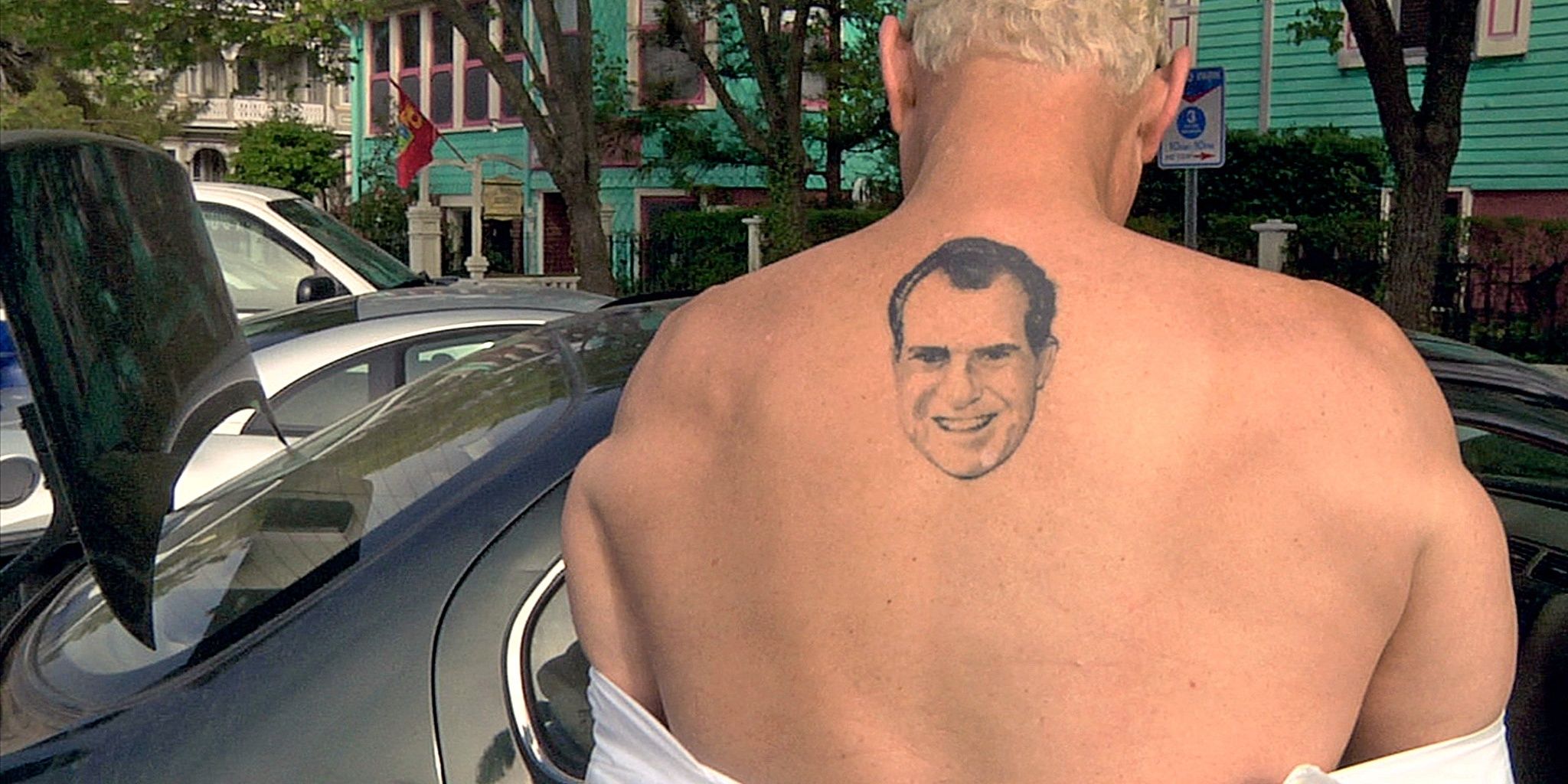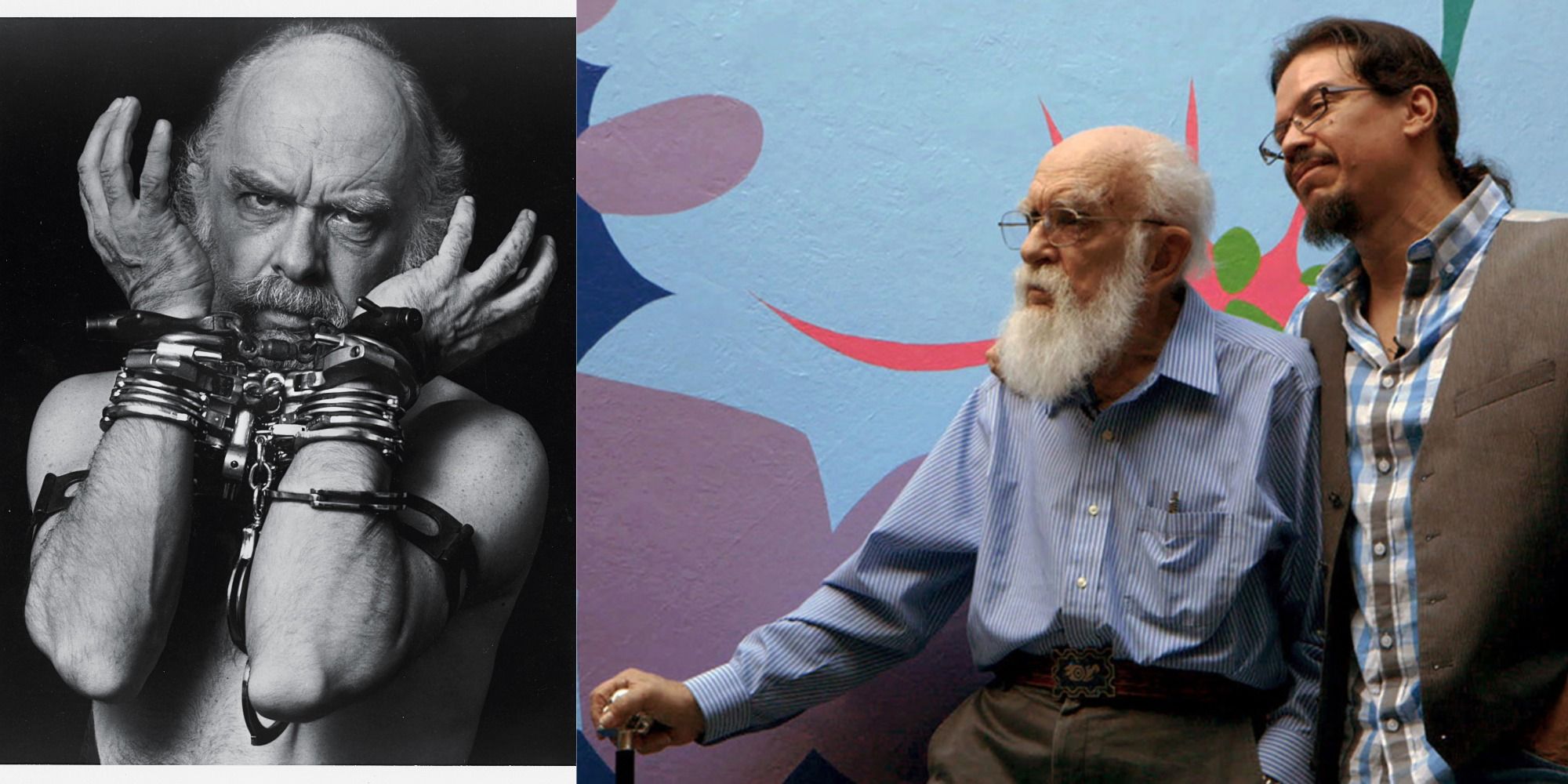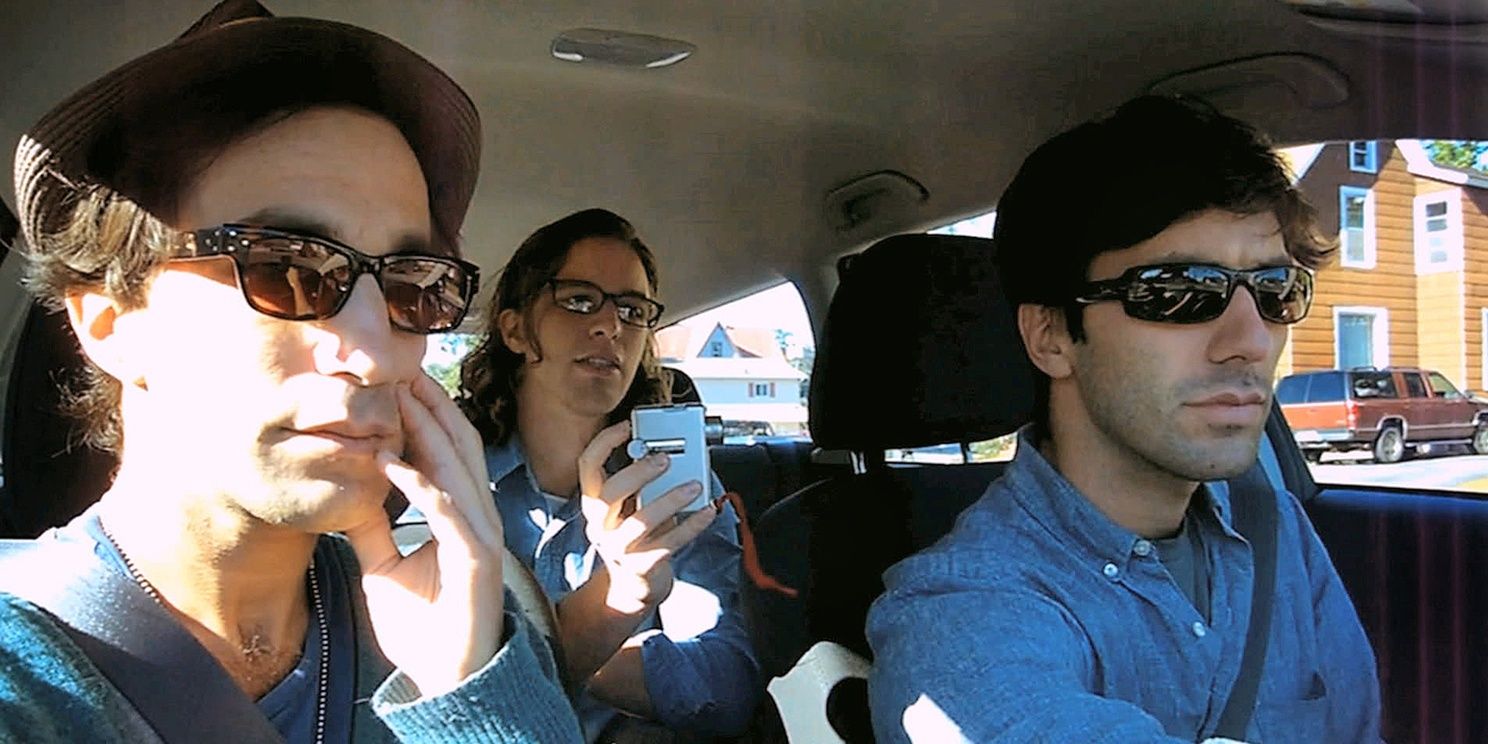Sometimes life is truly stranger than fiction. Fans of movies, books, podcasts, and television have always gravitated toward stories about con artists, scammers, and deceivers. It’s a fun thought experiment to climb into the mind of a snake-oil salesman and wonder how they justify their behavior.
The following documentary features are among the best in their genre, exposing the methods by which dishonest actors set out to defraud you every day, and their various motivations behind doing so. Not only are these movies about fascinating and unique subjects, but they are captured, scored, and edited by some of the most accomplished movie-makers in the business.
Nuts! (2016)
Penny Lane is one of the most distinctive documentarians out there, and Nuts!, her mostly-animated case study of quack “doctor” John R. Brinkley, is a testament to that. In the early 20th century, the charismatic, enterprising Brinkley made headlines for transplanting goat testicles into human men to increase sterility. Brinkley pounced on his newfound fame to run for governor, open a variety of businesses and become a pioneering voice in early radio. He was a beloved figure with an avid fan base, the only issue was, that he was a fraud the scientific community couldn’t wait to take down.
Lane’s key thesis is that we are all much more prone to being duped than we think. She presents the tale at first the way a propagandist would, then slowly unveils the lies and inconsistencies in Brinkley’s story. One of the most striking elements from Nuts! is how little the playbook for grifting has changed in the last century. To skirt around legitimate criticism, Brinkley would warn his fan base that he was being “censored by big medicine.” Anyone calling him a fraud was “faking the claims” out of jealousy. It’s amazing to see similar obfuscating tactics are still employed by figures like Elon Musk, Alex Jones, and Tucker Carlson to this day. Nuts! is hilarious, and at only 80 minutes, it’s well worth your time.
Art and Craft (2014)
One element that ties almost all scammers together, is their motivation to use their deceit to gain notoriety, money, or both. Mark Landis however, is a different breed. Landis is an art forger who takes delight in painstakingly copying well-known paintings, then donating “his” paintings to museums under the guise of philanthropy. His fakes are so convincing, that museum curators find no issue believing Landis’s offer is the real deal. Art and Craft asks, why does Landis go to all this effort for seemingly no reward?
Mark Landis is an enigma, a soft-spoken loner who genuinely appreciates paintings, so why deceive art lovers? Perhaps Landis loves cosplaying as a generous benefactor? At one point he even pretends to be a priest to convince a museum to accept his generous donation. Though his crimes are victimless, (and may technically not even be crimes), Landis is hunted by Mathew Leninger, a disgruntled art registrar dead-set on taking Landis down. It’s a small, low-stakes tale with serious emotions. Art and Craft is a quirky little film that celebrates the strange idiosyncrasies and niche obsessions of two mesmerizing characters.
The Armstrong Lie (2013)
Alex Gibney is considered one of the most important documentarians in the world. He is no stranger to stories about scammers, deceivers, and abusers, with films like Enron: The Smartest Guys in the Room, Going Clear: Scientology and the Prison of Belief, and The Inventor: Out for Blood in Silicon Valley under his belt. The Armstrong Lie is a clinical look into the events preceding Lance Armstrong’s infamous Oprah interview, where he confirmed partaking in the widespread doping within professional cycling. This doc sheds light on the great lengths cyclists, their team, and their sports scientists go to give themselves an artificial edge. It also illuminates the consequences the scandal has had on fans, the sport, and most importantly, those involved with Armstrong’s charitable foundation.
The greatest strength of The Armstrong Lie is discovering just how accepted doping in professional cycling was. Armstrong didn’t win because he was cheating, he won because his team was the BEST at cheating. The most disturbing scene comes when Armstrong fails a drug test, and the Tour De Force management immediately goes on the defensive and figures out how to cover it up. The film is such a definitive look into the scandal that even those with no interest in cycling will be engaged and enthralled. Gibney overturns every stone and takes no prisoners. Everyone is culpable, hundreds, if not thousands were in the know and said nothing.
Marjoe (1972)
Marjoe offers invaluable insight into the world of evangelical proselytizing, and the sleazy tricks preachers utilize to deceive their parishioners. This 1972 Academy Award-winning documentary follows Marjoe Gortner, a former wunderkind who was ordained as a minister at only four years old. A charismatic and intelligent child, Marjoe’s abusive parents profited from the novelty of their kid performing revival meetings all around the USA. Years after breaking free from his folks, the now-adult Marjoe takes a film crew behind the curtains as he preaches, demonstrating the carnival tricks he was taught to sucker believers out of their money.
This is akin to a magician taking you aside and detailing how their most elaborate illusions function. Marjoe is torn between having to make money for himself, and his guilty conscience for duping hopeful people. The most interesting maneuver involves Marjoe painting a cross in invisible ink on his forehead before a show, when the sweat mixes with the ink under the bright lights, the cross becomes visible, as if it were a divine sign from God.
Get Me Roger Stone (2017)
There’s a saying that politics is just “Hollywood for ugly people.” When it comes to Roger Stone, this saying hits the nail right on the head. Roger Stone is a long-time conservative strategist and lobbyist who worked for such controversial figures as Nixon, Reagan, and most infamously, Donald Trump. Get Me Roger Stone is a funny, tightly edited, eye-opening movie, examining Stone’s early career as a Nixon lackey, all the way through to the election of Trump in 2016, to whom Stone served as a sort of hype-man. As illustrated in this 90-minute Netflix doco, Stone is a proud parasite who attaches himself to any right-wing movement that will gain him publicity and notoriety.
In the same way a fiction film like Fight Club can employ an unreliable narrator, so can documentaries employ an unreliable subject. You must take everything Stone says with a large helping of salt. He claims to be one of the most important, “unseen” figures in American political history, yet many of his claims are dubious self-promotion at best. With this in mind, it’s unsurprising that Stone claims to be largely responsible for Trump’s presidential win. Donald Trump finds value in Roger Stone, or at least, in keeping Stone happy enough to not spill any campaign secrets. In 2020, when Stone was headed to prison for lying to congress about suspected election tampering, Trump gave him a pardon. Smith’s documentary is a wonderful glimpse into the mind of political theater, revealing the emperor certainly has no clothes.
My Kid Could Paint That (2007)
Have you ever seen a painting at a modern art gallery and thought “a kid could make that!” Well, Amir Bar-Lev’s 2007 doco, My Kid Could Paint That, suggests that it may not be so simple. In the early 2000s, 4-year-old Marla Olmstead became an international sensation when several of her abstract paintings sold for hundreds of thousands of dollars. Fascinated by Marla’s art, psychologists, journalists and painters alike examined her work, but soon expressed their suspicions that Marla’s father, Mark (an amateur artist) was responsible for her creating her paintings.
Modern art is the perfect topic for a documentary about scams, given the hyper-inflated costs and rampant money laundering prevalent in the industry. My Kid Could Paint That plays upon our cognitive biases. We want to believe a child did all these paintings, to expose modern painting itself as a racket. Yet, as the film continues, and hidden cameras expose Marla’s “method,” it becomes increasingly likely that her paintings were made by a talented adult. However, the movie never makes a declarative judgment; whether you think the Olmsteads are scamming people or not, it’s up to you to piece together the evidence and interpret the results.
An Honest Liar (2014)
The Amazing Randi was the King of Skeptics. An Honest Liar is a biography documenting Randi’s life, from his career as a popular magician and escape artist, to his post-showbiz life where he dedicated his time to exposing grifters, psychics, and faith healers. Most famously, Randi exposed Uri Geller, a man claiming to be telekinetic, on The Johnny Carson Show. We also are privy to Randi’s process in taking down debunked faith healer and televangelist, Peter Popoff. The doco’s breakdown of this operation is worth the price of admission alone. An Honest Liar renders Randi as a paranormal investigator who puts the Scooby-Doo crew to shame.
Holding the film together are the illuminating talking head interviews with Richard Wiseman, Penn & Teller, Adam Savage, and many other accomplished performers and scientists. If there’s one takeaway from this 2014 film, it’s how much conviction Randi has in exposing those who prey on the grieving and the sick. He loves illusions but loathes them when wielded by insincere actors who claim to have genuine powers. Like a great magic act, An Honest Liar has many hidden secrets unfold throughout. Randi reveals some surprises about his personal life, and the revelations therein are surprising, ironic, and touching.
Fyre Fest: The Greatest Party That Never Happened (2019)
In 2017, entrepreneur Billy McFarlane and rapper Ja Rule were set to launch Fyre Festival, a massive luxury music festival in the Bahamas. Fyre was promoted with a slick multi-million dollar marketing campaign and the help of some of the world’s most famous models. It was set to be attended by roughly 5,000 people; millions were spent on flights, lavish accommodations, exquisite gourmet food, and the promise of the “experience of a lifetime”. What the keen festival-goers received, however, was cheap cheese sandwiches, UN refugee tents, tropical storms, no musical acts or celebrities, and a sizable slice of humble pie. Fyre Festival’s failure became a social media phenomenon. The extent of the mismanagement as seen in Chris Smith’s Netflix documentary is staggering, and the total lack of care or self-awareness exhibited by those involved is hilarious.
Fyre: The Greatest Party That Never Happened is illuminating and occasionally preposterous. Nothing will awaken a person’s inner sense of Schadenfreude like watching this indulgent gathering fall into disaster. There’s something cathartic about watching a millionaire dudebro, his wealthy business partners, obnoxious celebrities, and rich kids, all lose control in such a spectacular way. Though we mock the organizer’s ineptitude, audiences must remember that the same shortcuts exploited by McFarland and his merry band of thieves have long been used (and will continue to be) by wealthy scammers to deprive innocent targets of their cash.
Catfish (2010)
In the late naughts, Nev Shulman befriends a woman named Megan over Facebook. They exchange songs, philosophies, and deeply personal messages with each other. Nev is in love. Nev’s brother, Ariel, and his friend, Henry Joost, decide to film Nev and his blossoming romance. However, soon the trio realizes that Megan’s story doesn’t quite add up. She contradicts herself and claims ownership of songs taken from a stranger’s YouTube channel. Joost and the Brothers Shulman set out to track her down. Megan seems too good to be true, and further investigation from the trio deems that to be the case.
Following the release of this amateur espionage documentary, the term “Catfish” took hold as the default internet lingo attributed to false social media accounts claiming to be someone they’re not. Above all else, Catfish is a deeply human story about searching for connection in the digital age, something almost everyone can relate to. When his potential love turns out to be a fantasy, we sympathize with him but are still glued to the screen as the directors unveil the motivation behind the subterfuge. We don’t receive liberation from outing the fraud behind the mask, we instead pity them, and relate to their loneliness. The massive success of Catfish resulted in a popular spin-off MTV show, a reality program lacking the authentic feel of the 2010 documentary.
Read Next
























































![Key Metrics for Social Media Marketing [Infographic] Key Metrics for Social Media Marketing [Infographic]](https://www.socialmediatoday.com/imgproxy/nP1lliSbrTbUmhFV6RdAz9qJZFvsstq3IG6orLUMMls/g:ce/rs:fit:770:435/bG9jYWw6Ly8vZGl2ZWltYWdlL3NvY2lhbF9tZWRpYV9yb2lfaW5vZ3JhcGhpYzIucG5n.webp)


-9.jpg)
-8.jpg)
.jpg)























